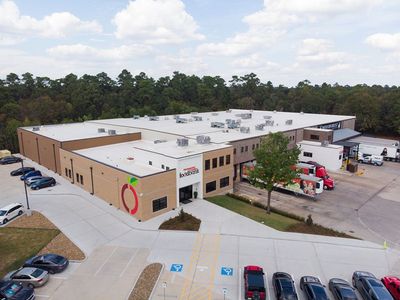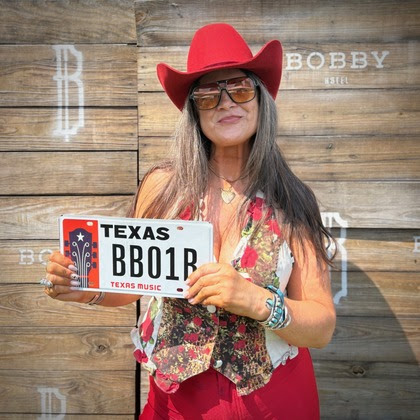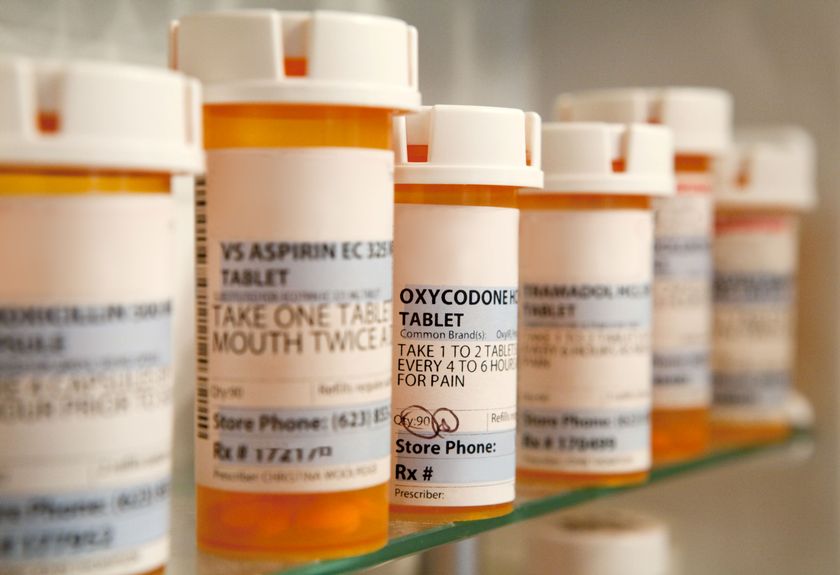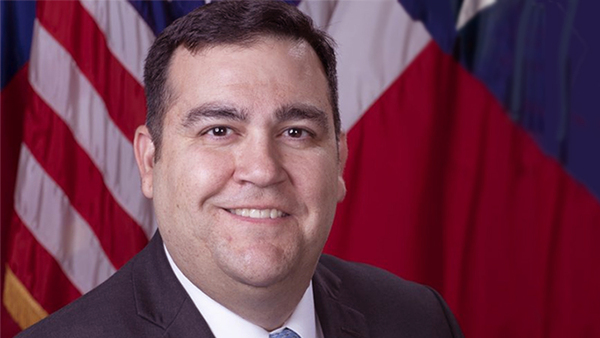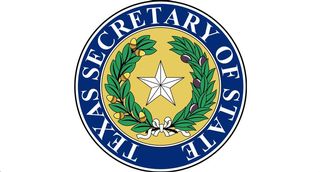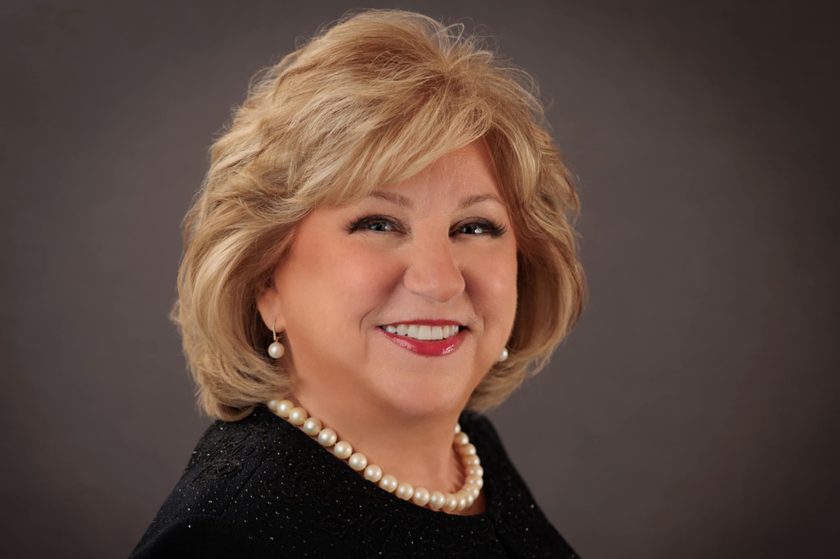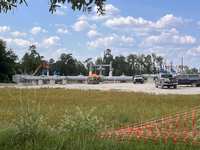- Sections :
- Crime & Public Safety
- Restaurants & Food
- Sports
- More
Categories
Houston Advanced Research Center (HARC): A Research Hub Rooted in and Modeled for Sustainability
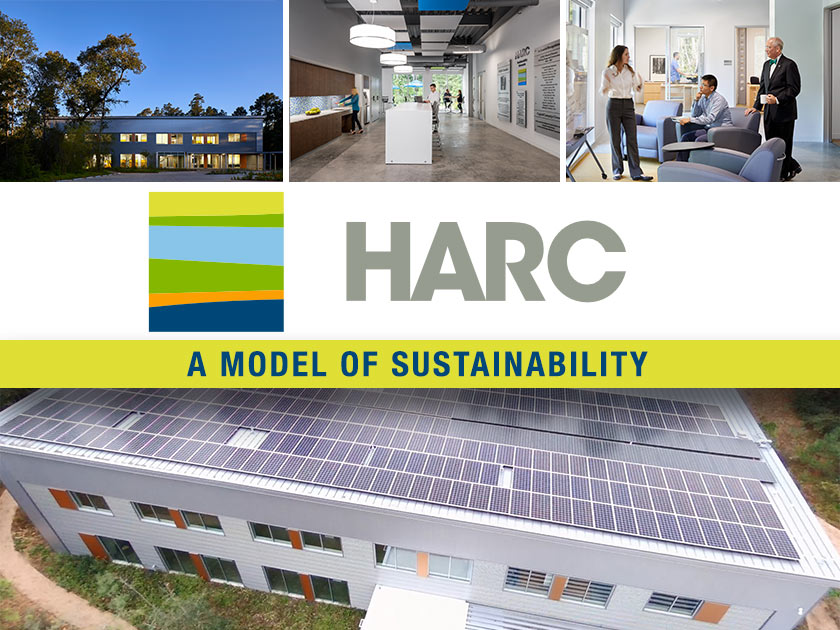
The Woodlands, TX -- A Vision and Initiative of George P. Mitchell
As I was greeted by Dr. Mustapha Beydoun, Vice President, and Chief Operating Officer at HARC, I noticed an interesting display on their lobby wall outside of their main boardroom. The display was a dedication to George P. Mitchell, the founder and developer of The Woodlands. You may not know this, but George Mitchell not only developed one of the fastest growing and highly desired master-planned communities in the country, but he also provided the vision and initiative that made the Houston Advanced Research Center possible. The quote under his picture not only set the tone for the rest of my visit, but it also provided the core reason and passion of HARC, a research hub providing independent analysis on energy, air, and water issues to people seeking scientific answers. The quote reads, 'If you can't figure out how to make the world work for 6 billion people, how are you going to make it work for 9 billion people?' George Mitchell believed in the sustainability of communities, and for many years, HARC has continued that vision.
HARC built a fascinating facility and employed some of the smartest researchers in the country. There are so many aspects of HARC to focus on, but since I was limited on time, I focused my efforts on one area of HARC that most people are not familiar with, which is HARC's newer headquarters built back in 2017. What impressed me the most was that not only did they strive to find answers to complex questions regarding sustainability, but they also lead by example. Their headquarters on Gosling Road is a net-zero energy building and has a Leadership in Energy and Environmental Design (LEED) Platinum certification. A designation that has not been matched by any other company in Texas.
Brief History of HARC
HARC was founded in 1982 in The Woodlands. It employed around 120 people and was initially set up as a non-profit university consortium that could act as a technology incubator to bridge basic research and market applications. HARC and other research facilities in that area of The Woodlands made up what we now call the 'Research Forest.' Years ago, HARC worked on many world-class research projects, including the Superconducting Super Collider. Around 2001, HARC re-aligned its mission to concentrate its research on sustainable development. HARC defines sustainability as engaging in practices that consider and support ecological, societal, and economic health and vitality. Their mission helps identify issues and solutions that touch on energy, air, and water sustainability. Today, the US Department of Energy is among their many clients.
A Model of Sustainability
To say that the HARC headquarters is an impressive accomplishment in energy efficiency and sustainability would be an understatement. The facility itself is an 18,500 square foot building situated on a 3.5-acre site. It cost $7 million to build and furnish. 70% of the site remains undeveloped, utilizing only native trees, grasses, and flowers. HARC uses bioswales to capture, filter, and slow the water runoff from around their site. They focus their efforts on three main areas to reduce their energy footprint. They utilize solar panels on the roof of their building, geothermal heat exchanges for heating and cooling, and an air-tight high-performance building envelope to keep their facility one of Texas's most energy-efficient commercial buildings. Those three areas help them to use 70% less energy than a comparable commercial building of their size.
Mustapha showed me a monitor that hangs in their entrance that displays their building's energy usage in real-time. Over the last 12 months, the solar panels generated 157% of their required electricity. Throughout the year, they do not pay for electricity. They generate enough electricity through the solar panels to not only cover the cost of their building's electricity usage, but the extra electricity that they generate is sold back to Entergy for about 30% of the normal cost of a standard Kilowatt Hour. This allows them not to incur an electricity bill and also covers their water bill.
Their lighting and energy monitoring system was awe-inspiring as well. There is no incandescent lighting on the HARC campus. Every light is an LED light. LED lighting generates less heat, is more energy efficient (about 90% more efficient), and has a longer life span. In addition to the LED lighting, every outlet is tracked for electricity usage. From monitors to printers to desktop accessories, all outlets are tied to a system that tracks and reports how much electricity is being used. HARC also considered natural lighting when designing their headquarters. Although Mustapha turned on lights in various rooms throughout the building, it was unnecessary due to the abundance of natural light. Daylight reaches about 75% of their facility.
Finding Solutions for a Sustainable Future
Although I found the HARC headquarters to be a fascinating building and an example of energy efficiency and sustainability, I am impressed with their mission that began with George Mitchell. To provide independent analysis on energy, air, and water issues to people seeking scientific answers and to operate as a research hub finding solutions for a sustainable future.
Click here to view the HARC Photo Gallery
Click here to learn more about Houston Advanced Research Center.
Click here to sign up for their HARC newsletter
Awards
- October 2017 - Best Projects Award of Merit by Engineering News Record (ENR) Texas and Louisiana
- Houston Business Journal 2018 Landmark Awards Finalist
- 2018 Gold Level (highest level) Association of General Contractors (AGC) APEX Award Winner, Office Building, Under $20M category
- 2019 ULI Houston Development of Distinction Award Winner
- 2019 US Green Building Council's TX Chapter Leadership Awards Project of the Year Winner
About Mustapha Beydoun, PhD
Dr. Mustapha Beydoun is the Vice President and Chief Operating Officer of the Houston Advanced Research Center (HARC). He is responsible for directing, administering, and coordinating the operations of HARC, including its LEED Platinum Zero Energy HQ building, in support of the organization's strategic and administrative goals. His research interests are air quality, vehicle emissions and electrification, industrial development, urban planning and growth management, renewable energy, and energy efficiency. Dr. Beydoun has led multidisciplinary and multi-institutional teams addressing complex sustainability, environmental, climate, energy, waste management, technology, manufacturing, regulatory, and security issues both in the U.S. and internationally. He currently leads HARC's air quality research program, which focuses on air quality monitoring and modeling, emissions inventories, health impact assessments, and research management. Current projects include broad air quality data analysis, modeling, and stakeholder engagement efforts in Harris County, Texas, along with a multidisciplinary regional emergency management planning effort focused on industrial accidents, significant emissions events, and chemical releases in the Houston Ship Channel.
George Mitchell believed in the sustainability of communities, and for many years, HARC has continued that vision.
As I was greeted by Dr. Mustapha Beydoun, Vice President, and Chief Operating Officer at HARC, I noticed an interesting display on their lobby wall outside of their main boardroom. The display was a dedication to George P. Mitchell, the founder and developer of The Woodlands. You may not know this, but George Mitchell not only developed one of the fastest growing and highly desired master-planned communities in the country, but he also provided the vision and initiative that made the Houston Advanced Research Center possible. The quote under his picture not only set the tone for the rest of my visit, but it also provided the core reason and passion of HARC, a research hub providing independent analysis on energy, air, and water issues to people seeking scientific answers. The quote reads, 'If you can't figure out how to make the world work for 6 billion people, how are you going to make it work for 9 billion people?' George Mitchell believed in the sustainability of communities, and for many years, HARC has continued that vision.
HARC built a fascinating facility and employed some of the smartest researchers in the country. There are so many aspects of HARC to focus on, but since I was limited on time, I focused my efforts on one area of HARC that most people are not familiar with, which is HARC's newer headquarters built back in 2017. What impressed me the most was that not only did they strive to find answers to complex questions regarding sustainability, but they also lead by example. Their headquarters on Gosling Road is a net-zero energy building and has a Leadership in Energy and Environmental Design (LEED) Platinum certification. A designation that has not been matched by any other company in Texas.
Brief History of HARC
HARC was founded in 1982 in The Woodlands. It employed around 120 people and was initially set up as a non-profit university consortium that could act as a technology incubator to bridge basic research and market applications. HARC and other research facilities in that area of The Woodlands made up what we now call the 'Research Forest.' Years ago, HARC worked on many world-class research projects, including the Superconducting Super Collider. Around 2001, HARC re-aligned its mission to concentrate its research on sustainable development. HARC defines sustainability as engaging in practices that consider and support ecological, societal, and economic health and vitality. Their mission helps identify issues and solutions that touch on energy, air, and water sustainability. Today, the US Department of Energy is among their many clients.
A Model of Sustainability
To say that the HARC headquarters is an impressive accomplishment in energy efficiency and sustainability would be an understatement. The facility itself is an 18,500 square foot building situated on a 3.5-acre site. It cost $7 million to build and furnish. 70% of the site remains undeveloped, utilizing only native trees, grasses, and flowers. HARC uses bioswales to capture, filter, and slow the water runoff from around their site. They focus their efforts on three main areas to reduce their energy footprint. They utilize solar panels on the roof of their building, geothermal heat exchanges for heating and cooling, and an air-tight high-performance building envelope to keep their facility one of Texas's most energy-efficient commercial buildings. Those three areas help them to use 70% less energy than a comparable commercial building of their size.
Mustapha showed me a monitor that hangs in their entrance that displays their building's energy usage in real-time. Over the last 12 months, the solar panels generated 157% of their required electricity. Throughout the year, they do not pay for electricity. They generate enough electricity through the solar panels to not only cover the cost of their building's electricity usage, but the extra electricity that they generate is sold back to Entergy for about 30% of the normal cost of a standard Kilowatt Hour. This allows them not to incur an electricity bill and also covers their water bill.
Their lighting and energy monitoring system was awe-inspiring as well. There is no incandescent lighting on the HARC campus. Every light is an LED light. LED lighting generates less heat, is more energy efficient (about 90% more efficient), and has a longer life span. In addition to the LED lighting, every outlet is tracked for electricity usage. From monitors to printers to desktop accessories, all outlets are tied to a system that tracks and reports how much electricity is being used. HARC also considered natural lighting when designing their headquarters. Although Mustapha turned on lights in various rooms throughout the building, it was unnecessary due to the abundance of natural light. Daylight reaches about 75% of their facility.
Finding Solutions for a Sustainable Future
Although I found the HARC headquarters to be a fascinating building and an example of energy efficiency and sustainability, I am impressed with their mission that began with George Mitchell. To provide independent analysis on energy, air, and water issues to people seeking scientific answers and to operate as a research hub finding solutions for a sustainable future.
Click here to view the HARC Photo Gallery
Click here to learn more about Houston Advanced Research Center.
Click here to sign up for their HARC newsletter
Awards
- October 2017 - Best Projects Award of Merit by Engineering News Record (ENR) Texas and Louisiana
- Houston Business Journal 2018 Landmark Awards Finalist
- 2018 Gold Level (highest level) Association of General Contractors (AGC) APEX Award Winner, Office Building, Under $20M category
- 2019 ULI Houston Development of Distinction Award Winner
- 2019 US Green Building Council's TX Chapter Leadership Awards Project of the Year Winner
About Mustapha Beydoun, PhD
Dr. Mustapha Beydoun is the Vice President and Chief Operating Officer of the Houston Advanced Research Center (HARC). He is responsible for directing, administering, and coordinating the operations of HARC, including its LEED Platinum Zero Energy HQ building, in support of the organization's strategic and administrative goals. His research interests are air quality, vehicle emissions and electrification, industrial development, urban planning and growth management, renewable energy, and energy efficiency. Dr. Beydoun has led multidisciplinary and multi-institutional teams addressing complex sustainability, environmental, climate, energy, waste management, technology, manufacturing, regulatory, and security issues both in the U.S. and internationally. He currently leads HARC's air quality research program, which focuses on air quality monitoring and modeling, emissions inventories, health impact assessments, and research management. Current projects include broad air quality data analysis, modeling, and stakeholder engagement efforts in Harris County, Texas, along with a multidisciplinary regional emergency management planning effort focused on industrial accidents, significant emissions events, and chemical releases in the Houston Ship Channel.
Comments •

